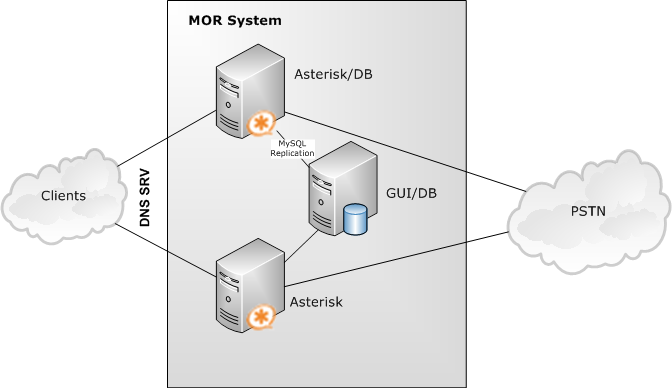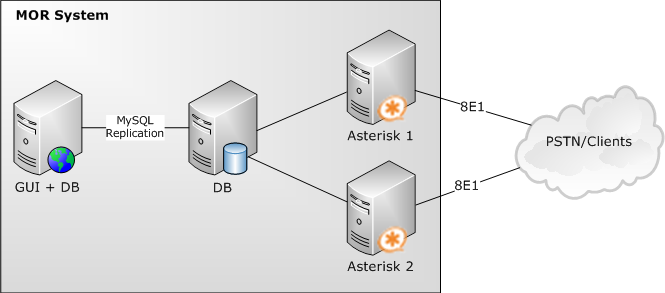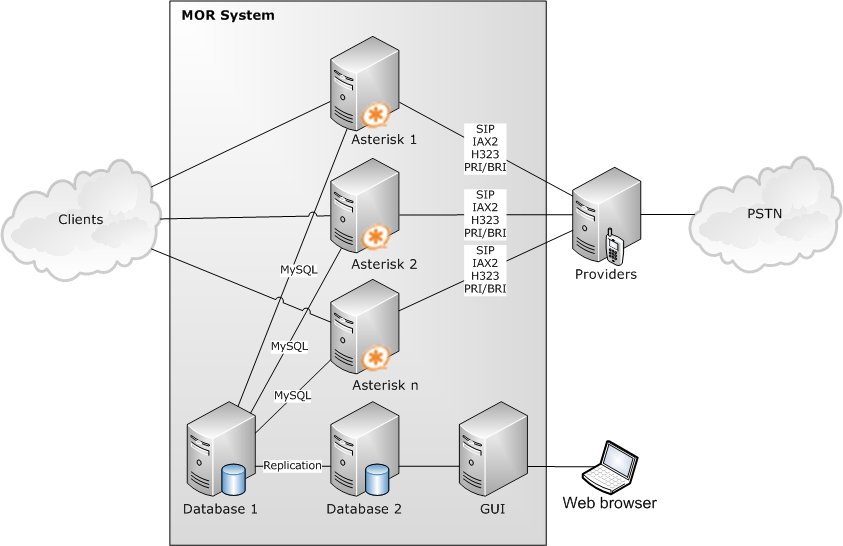Difference between revisions of "Implementations"
From Kolmisoft Wiki
Jump to navigationJump to search
| Line 10: | Line 10: | ||
More info: [[2 server redundant solution]] | More info: [[2 server redundant solution]] | ||
<br> | |||
---- | |||
<br> | |||
==4 server redundant solution== | |||
[[Image:4serverredundant_withlinuxha.png|200px]] | |||
Stable and redundant solution for high performance. | |||
More info: [[4 server redundant solution]] | |||
<br> | <br> | ||
Revision as of 13:27, 19 January 2009
This page shows some ways how MOR billing system can be used. Examples are from real implementations.
2 server redundant solution
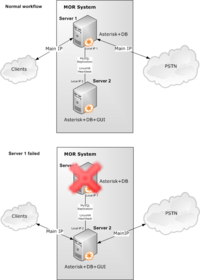 This is most popular solution because it is fully redundant and most stable.
This is most popular solution because it is fully redundant and most stable.
More info: 2 server redundant solution
4 server redundant solution
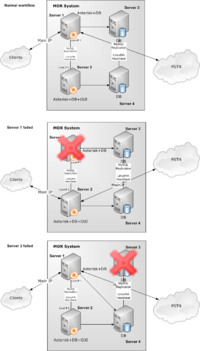 Stable and redundant solution for high performance.
Stable and redundant solution for high performance.
More info: 4 server redundant solution
3 server redundant solution
- By default calls go to first Asterisk server
- If first Asterisk server fails, DNS SRV points to second Asterisk server
- If database server fails, second Asterisk server is still functional and can serve calls
- How it will work with DNS?
- Traffic should come to some URL, which is configured using DNS SRV, e.g. it should route calls from URL to first server IP, if this IP is not available - then this URL points to second server IP
- Do we need separate DNS server?
- It is not necessary, DNS SRV can be configured on your Internet providers' DNS server.
- What hardware is recommended for each server?
- Main Asterisk server should have powerful CPU (Dual/Quad Xeon) and at least 2GB RAM
- DB/GUI server should have FAST HDD and 2-4Gb RAM. CPU is not so important here
- Asterisk/DB server can be not so powerful as other two
- How many network cards are necessary for each server?
- They can work with one card, but better to have 2 cards for each server and interconnect servers on dedicated LAN
 4 server solution in Italy with 16 E1
4 server solution in Italy with 16 E1
- Such system is in Italy serving Call Shops
- E1 hardware is 2 x Sangoma A108DE cards
- This implementation is used for high volume calls to/from PSTN network over 16 E1 links were 4+4 E1 is for incoming and 4+4 E1 is for outgoing (on Asterisk 1 server 4 incoming/4 outgoing and same on server Asterisk 2).
- Separate server is dedicated to database which minimizes load on Asterisk servers.
- GUI is on separate server with it's own DB connected to main DB server over MySQL Replication.
